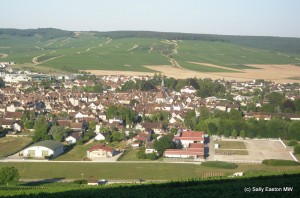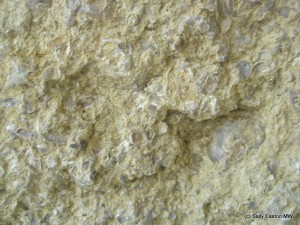La Chablisienne: quality and minerality

Chablis village
La Chablisienne is one of those rare enough things, a quality-orientated co-operative that’s also blessed by its members with some great vineyard plots, which boost its reputation overall.
In an oft-quoted figure, the co-op accounts for almost a quarter of the entire area under production (Total Chablis vineyard 4,900 hectares), making every appellation from Petit Chablis to Grand Cru. OK there are only four appellations (plus Chablis and Chablis 1er cru), but it does show the spread of work they do at the co-op.
The nearly 300 growers belonging to the co-operative have their own presses, so the co-op winery receives only juice, in order to control the fermentations. In a less qualitative era the winery accepted wines which they blended, selling most wholesale.
Before it reaches the juice stage, though, growers have three audits during the growing season, Xavier Ritton, export manager, explained, firstly the winter pruning, then at flowering” to check that is proceeding as well as weather allows. And finally two weeks before harvest “so the winemakers have a map of the whole vineyard area and can decide the harvest order.”
In the winery, Ritton explained, they have twice the capacity they need, which gives the winemakers plenty of flexibility as they make 30 different premier crus wines and six different grand crus climats, alongside the Petit Chablis and Chablis Villages. For each appellation, he said “the juice is classified to A, B and C grades, and we may even sell off C grade in bulk” if it’s not up to scratch for their own wines.
Back in the vineyard the co-op is doing plenty of work to reduce chemical inputs. Only two small plots are certified organic, which makes effective and fair (to those who are certified) communication quite difficult for the most of the co-op vineyards that aren’t. But, for example, since buying the Château Grenouilles estate in 2003 – the co-op owns 80% of this entire Grand Cru appellation – they have worked to lessen soil compaction with regular ploughing to enable roots to penetrate more deeply, they’ve stopped using herbicides and artificial fertilisers, they use more compost for organic matter and they’ve increased ventilation in the vineyard by better controlling vegetative vigour. This helps prevent grey rot attacks.
It all seems quite basic stuff, but getting members on board, generally at a co-op, with the ethos of more sustainable practices can be a challenge in itself. La Chablisienne brand ambassador Hervé Tucki said the co-op “has two viticulturists in the team who advise growers, but members of the co-op have no obligation to speak with the viticulturalists.”

Rock oysters
One thing the co-op has taken on with gusto is taking a lead with the long, close association of Chablis to its Kimmeridgian (Upper Jurassic) chalky marls and Portlandian limestone, and the finding of mineral qualities in the wines. Ritton said “minerality is king in Chablis. You can’t talk about Chablis without talking about minerality.”
The co-operative has substantiated this to a degree by producing a couple of booklets expounding minerality. One, “the mineral touch” merely links the soils with mineral perception in the appellations. Kimmeridgian soils – mixed clay and limestone – named after the village in England’s Dorset, embedded with tiny oysters (Exogyra virgula) are said to imbue minerality to the wines. It talks of Kimmeridgian soil and a ‘mineral edge’, ‘lively and mineral Bougros’, dry and mineral Blanchot’.
The second booklet – “minerality” – delves a lot deeper into this term that has emerged over the last generation. It’s a really good summary of the range of smells, tastes and palate sensations that are spoken of (without consensus) under the heading of minerality for example, purity, freshness, seashells, iodine, pebbles. Flinty is a word that’s long been associated with the taste of Chablis. No flint in Chablis. It talks of minerality and vine age, minerality and acidity. Download it here.
Elsewhere, it’s good to know that proper scientific research into minerality in Chablis wines is being done, but that’s another story.



